こんにちは、Kurochuです( ^ω^ )
今回は、私が大好きなセブ島に関する記事です〜〜。自分の英語力を伸ばす一方でブログ記事も書けちゃうこのスタイル結構気に入ってます(笑)
目次
はじめに
セブ島でのタクシービジネスに興味があり、色々と調べていたKurochuなのですが、先日、現地の記事でちょっとびっくりするような内容を発見したので、セブ島でタクシービジネスを始めようとしている方の参考になればと思い、書いていこうと思います。
セブにおけるタクシー業界のリアル
CEBU, Philippines — It was Friday, a normally busy day for drivers of public utility vehicles, but at a garage in Sitio Tagunol, Barangay Basak, Cebu City, dozens upon dozens of taxi units remained parked.
Ten years ago or so, when taxis still enjoyed the reputation of being the preferred mode of transport in Cebu aside from public utility jeepneys, the scene would have been unthinkable.
But there they were on Friday, nearly 90 taxi units, sitting idle on one of the biggest, and arguably the oldest, taxi garages in Cebu
我々は、フィリピン・セブ島において、ドライバー達が最も忙しくなるはずの金曜日に取材を行った。しかし、セブ市バサック地区のガレージには、何十ものタクシーが駐車されたままになっていた。
ジプニーは別として、十数年前からタクシーはセブにおいて最適な交通手段であり、繁栄を謳歌していた頃と比べると、こんな状況は考えられなかった。
しかし、金曜日に訪れた際には、セブにおいて最も大きく、間違いなく最古のタクシー会社『Richielda’s』に、90台近くのタクシーが確かに停められていた。
Richard Cabucos founded the company 40 years ago, shortly after retiring from his job as a mechanic for an airline company. Starting with just one unit, the business grew to reach 136 units today.
Being one of the earliest taxi operators locally, Cabucos witnessed the industry’s growth, stagnation, and decline.
リチャード・カブコス氏は、航空会社のエンジニアとしての職をリタイアした後、今から約40年前に同タクシー会社を設立した。たった1台のタクシーからスタートしたが、今日では136台にまで事業規模は拡大し、現地の最も早い時期に成功したタクシー運営会社となった。
カブコス氏はタクシー業界の成長・停滞・衰退を全て見てきた人物なのである。
In its heyday, the taxis provided more than enough food for their family’s table. They also allowed him to send his two children to college, who are now professionals and the ones running the affairs of the business.
But the business that has run smooth for years is now caught in the middle of an economic standstill. And as more alternative modes of transport are introduced and implemented, Richielda and other taxi operators are forced together to tread a similar road – that of slow, agonizing death.
“If this system continues, the industry will die. Except for players who could shell out more funds to save their businesses. If the situation is left unattended taxi operators will file for bankruptcy,” Cabucos told The FREEMAN.
Out of Richielda’s 136 units, only 50 are currently plying the streets. The rest remain, as Cabucos said, rotting in his garage.
Some units have been sold to junkshops for P8,000 to P10,000 apiece. Many of his drivers have also quit and opted to drive Grab cars, Angkas and habalhabals that promise them more lucrative earnings.
タクシー業界の全盛期には、ドライバーは家族を養うのに十分な稼ぎを得ることができた。 また、ドライバー達から上がってくる収益によって、カブコス氏は二人の子供を大学に送り出すことができ、そのうちの一人は、同社の運営に携わっている。
しかし、何十年も上手くいっていた同社のビジネスは、経済停滞に巻き込まれ、行き詰まっているという。さらに、他の交通手段が導入・実装され、Richielda’sや他のタクシー会社は、死への道を歩まざるを得なくなっている。
「万が一現在のシステムが継続されれば、タクシー業界は大きな資本を有する会社を除いて死んでしまう。この状況を放置し続ければ、タクシー事業者は破産者の山を築くことになる。」とカブコス氏は訴える。
136台ある同社のタクシーの内、実際に稼働しているのは50台のみ。カブコス氏によれば、他のタクシーは彼のガレージにて停まったままになっているという。
何台かはジャンクショップに一台当たり8,000〜10,000ペソ(約17,600〜22,000円)で売却しているらしい。彼の会社のドライバーの多くが退職し、Grab Car(東南アジア拠点の配車サービス)のドライバーに転職しており、Angkas(バイク専門の配車アプリ)やhabalhabals(モーターバイク)の方が高収入を期待できるという。


タクシー運転手の苦悩
アントニオ・ナーグダ氏
If there are people who directly feel the pinch, it’s the taxi drivers themselves. Antonio Narguada, 49, has driven taxi for 30 years. It breaks his heart to know that taxi has now become just an alternative – worse, the last resort – for the riding public, no thanks to app-based rides and habalhabal services that offer cost-competitive and user-friendly options to passengers.
“We would purposely stop so passengers would ride, but they wouldn’t. Sometimes we feel insulted when they tell us they’ve decided to ride a taxi because their Grab came late. They just ride when they really need it.”
Narguada, who has a wife and seven children, rents a unit of C&C Taxi at P1,100 for 24 hours. He hits the streets as early as 5 a.m., and drives until the next day.
Likening driving to fishing, he said it sometimes takes long to “catch” a passenger. When this happens, he parks at peopled areas like the Cebu South Bus Terminal and does not mind paying P10 just to pick up passengers.
He then spends three to four hours sleeping on the road before returning his unit at 4 a.m.
Narguada said he has lost half of his income to ride-hailing services and habalhabals. He used to earn P1,000 to P2,000 every day. Now, a take-home earning of P500 is already a good day.
“It was good before. Now, my wife would ask me where my money has gone. But that’s all I earned,” he said.
Though he is going through tough times, though, Narguada is not bent on turning his back on the job that has supported the college studies of two of his children, one of whom now a licensed professional teacher and the other graduated just this week with a degree in education.
He said he would retire soon once his youngest child, now three years old, finishes school.
もし、業界のピンチを真っ先に直接感じる人がいるなら、それはタクシーのドライバー達自身であろう。30年以上に渡ってタクシードライバーとして働いてきたアントニオ・ナーグダ氏(49歳)にとって、タクシーが、『コスト優位性』『使いやすさ』を兼ね備えたアプリベースの配車サービスやバイクタクシーの代替交通手段に成り下がってしまったことはとてもショックだという。
「私たちタクシーが、道沿いで何かを待っている人を見つけ、わざと目の前に停車しても乗ってくれない。たまに乗客が乗ってきても、待っていたGrabが遅かったから私のタクシーに乗ることにしたと聞かされることがあり、侮辱されたような気持ちになることもある。もはや乗客は、緊急時にしかタクシーに乗ってくれない。」
ナーグダ氏は妻と7人の子供を持ち、C&C Taxiから一日1,100ペソ(約2,420円)でタクシーをレンタルしている。彼は毎朝5:00頃から仕事を始め、翌日まで走り続けるそうだ。
魚釣りとタクシーの運転は似ていると彼は言う。たまには乗客を「キャッチ」するのに非常に時間がかかる。その場合、彼は南バスターミナルのような人が多い場所で駐車して乗客を待つのだという。バスターミナルへの入場料として10ペソ(約22円)徴収されてしまうが、それは気にしないらしい。
そして、彼がタクシーを戻す午前4:00になる前に車中で3〜4時間の睡眠を取るのだそう。
ナーグダ氏によると、収入の半分を配車サービスとバイクタクシーに取られてしまっている。彼は毎日1,000〜2,000ペソ(約2,200〜4,400円)を稼ぎ、自分の手元に残るお金は良くても1日あたり500ペソ(約1,100円)とのこと。
「昔は良かった。今では、妻からどこでお金を使ってきているのか問い詰められる。それが稼ぎの全てなのに。」と彼は言う。
彼にとってはとても辛い状況だが、ナーグダ氏は大学に通う二人の子供にかかる学費を賄っている現在のタクシードライバーとしての職を変えるつもりはないと言う。
彼は、末っ子(3歳)が学校を卒業したらすぐにリタイヤするのだそう。
Jimmy Quindao, 48, a driver of Dunken Taxi, barely makes ends meet with his P300 to P500 daily take-home pay. He rents a unit at P1,300 a day.
Quindao, who started driving when he was still 19, used to earn P1,000, driving for only 10 hours.
When Angkas and habalhabals emerged, he said, it made driving taxi less profitable.
But since he has three children to feed, he hangs on with his taxi and dabbles in driving a habalhabal for extra income. Since he owns the motorcycle, he need not pay rent and earns P500 in a span of seven hours.
He has noticed that many passengers are now opting motorcycles as a means of transport since they are cheaper.
ジミー・クインダオ氏
ジミー・クインダオ氏(48歳)は、Dunken Taxiのドライバーで、手元に残るお金は1日あたり300〜500ペソ(約660〜1,100円)。彼は1日1,300ペソ(約2,860円)でタクシーをレンタルしている。19歳からタクシードライバーとして働いている彼によると、当時は10時間働けば1,000ペソ(約2,200円)は稼ぐことができたという。
彼はAngasやhabalhabalsが出現してから急速にタクシードライバーは稼げなくなったと説明する。
しかし、彼には3人の子供がいる為、タクシードライバー以外にも、habalhabalドライバーとしても働いている。彼は自身のモーターバイクを持っている為、レンタル料金を払う必要が無く、7時間の労働で500ペソ(約1,100円)を稼ぐことができている。
彼は、多くの乗客が料金の安いバイクタクシーに流れていることを嘆いていた。
Taxi driver Danny Villagonzalo, 56, echoed the sentiments of Narguada and Quindao.
Villagonzalo was a bus driver in the 1980s and transferred to the taxi service in 2010. He pays a daily boundary fee of P1,100 with Sam Taxi and gets an average of P350 to P400 for plying from 6 a.m. to 10 p.m.
Having no other livelihood, he said he is stuck with cab driving. Good thing for him, he said, he no longer has little mouths to feed. His sons now work as bus drivers.
Villagonzalo considers motorcycle-for-hire drivers as the industry’s direct competitors since they pick up passengers anywhere. Grab and Angkas, on the other hand, use the booking system.
He said passengers opt for motorcycles to arrive at their destinations faster, that he insists that the risks also increase exponentially with motorbikes.
“They don’t have insurance, unlike taxis. When they figure in accidents, where can they claim damages?,” he said.
ダニー・ビラゴンザロ氏
次に取材したタクシードライバー、ダニー・ビラゴンザロ氏(56歳)もナーグダ氏とクインダオ氏と同様のことを述べた。
ビラゴンザロ氏は1980年代にタクシードライバーとして働き、2010年からタクシードライバーに転職した。彼は、Sam Taxiにレンタルフィーとして1,100ペソ(約2,420円)を日々支払っており、6:00〜22:00までの労働時間で、平均の手取りは350〜400ペソ(約770〜800円)。
もし、他に生計を建てる手段を持っていなければ、ドライバーの仕事だけでは生きていけない。唯一彼にとって良いことは、既に高齢である彼は食が細く、食費にあまりお金がかからないことだけだという。また、彼の子供はバスのドライバーとして働いている。
ビラゴンザロ氏はバイクタクシーが直接的なライバルであると説明する。バイクタクシーは、タクシー同様にどこででも乗客を乗せることができるからだ。一方のGrabやAngkasは予約するシステムのため、自分たちとは少し異なると考えているようだ。
彼は、バイクタクシーの方が目的地に早く到着できると考えている乗客は、それに伴って危険も増えているということを認識すべきだと主張。
「バイクタクシーはタクシーと違って、保険に入っていない。もし彼らが事故を起こした場合、彼らはどこに損害を請求するのだろうか?」と彼は言う。
政府の方針に翻弄されるタクシー業界
For the Metro Cebu Taxi Operators Association (MCTOA), incidentally headed by Cabucos, motorcycle-for-hires should be banned from main thoroughfares and should only serve mountain barangays.
MCTOA is an organization of 65 taxi operators with a total of 3,400 units and holders of Certificates of Public Convenience to operate in Metro Cebu and Cebu province.
Cabucos admitted that when motorcycles and apps-based ride services sprouted like mushrooms, they instantly became a hit, owing to their convenience.
But Cabucos believes that the Cebu City government’s support to Angkas and habalhabal drivers is motivated by politics, especially now that midterm elections is a month away.
カブコス氏が会長を務めるメトロセブタクシー事業者協会(以下、MCTOA)は 、山間地区を除き、主要道路からバイクタクシーを排除するべと主張している。
MCTOAは、セブ中心地において、65社のタクシー事業者および3,400台のタクシーが所属している組織。
カブコス氏はバイクタクシーやアプリベースの配車サービスがキノコのように続々と誕生し、流行となり、便利さを創出したことを認めました。
しかし、カブコス氏は、セブ市政府のAngkasやhabalhabalドライバーへのサポートは、1ヶ月先に控える中間選挙を狙ったものであると考えている。
Mayor Tomas Osmeña, a vocal advocate of habalhabals, earlier pledged not to abandon the Angkas and motorcycles-for-hire drivers in the city affected by the temporary restraining order issued by the Supreme Court in December that stops their operations.
The city government has started to distribute sacks of rice to qualified habalhabal drivers. To qualify for the rice subsidy, one must be a registered voter in the city and a member of any habalhabal association.
Last February, the House of Representatives unanimously approved on third and final reading the House Bill 8959 that allows motorcycles-for-hire or habalhabals to operate as alternative commuter vehicles.
Osmeña has contended that his soft spot for motorcycle drivers is not really something new; he has been advocating for their welfare since 2016, he said.
In fact, the mayor took pride in having helped push the passage of the bill after attending the hearing in Congress. He pointed out the importance of habalhabals in upland barangays where roads are not built for jeeps or other types of four-wheeled vehicles.
先日、habalhabalsの支持者であるトーマス・オスメナ市長は、最高裁判所が12月に下した「彼らの営業を一時的に停止させよ」との勧告を受け、市内のAngkasやバイクタクシーを廃止しないと公言していた。
市政府は、登録されているhabalhabalのドライバーに米の配給を行った。米の配給を受けるためには、市の有権者登録が必要であり、habalhabalの協会に所属している必要があるという条件付きであった。
先週金曜日、衆議院は満場一致でバイクタクシーやhabalhabalsに代替通勤者用車両としての活動を認める8959衆議院法案を承認した。
オスメナ市長は、彼のバイクドライバーへのサポートは最近始めたものでは無く、2016年から、彼らの福祉に関して提唱してきたと述べた。
事実、市長は議会での公聴会に出席した後、法案の成立を推し進めたことに誇りを持っていました。彼は、ジプニーや他の四輪車が走行できないような山間地におけるhabalhabalsの重要性を指摘してきた。
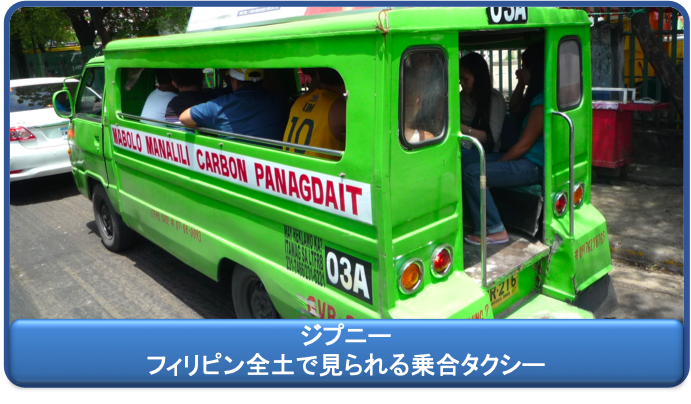
Cabucos said he is willing to speak during the Senate hearing on the passage of the habalhabal bill to make lawmakers aware of the plight of the taxi operators and drivers.
Instead of backing up Angkas and habalhabal drivers, Cabucos said, Osmeña should identify areas in the city where new routes for public utility vehicles can be opened and assign the motorcycle-for-hires in mountain barangays.
Cabucos said they were also frustrated with Grab since it “used” them as Grab taxis when it was just starting. Now that more passengers are booking for its services, Grab is reportedly focusing more on Grab cars and is even enticing their taxi drivers to transfer to them.
カブコス氏は、議員にタクシー事業者とドライバーの窮状を訴える為、上院での聴聞会中にhabalhabal法案の可決について話す意思があると述べた。
カブコス氏は、オスメナ市長はAngkasとhabalhabalのドライバーをサポートするのではなく、市内でタクシーが営業できる場所の特定と、山間部へのバイクタクシー割り当てを実施する必要があると述べた。
カブコス氏は、Grabにも頭にきていると言っている。なぜなら、タクシーがGrabにGrab Taxiとして使われているからだ。現在では、そこからの乗客が増加しており、報告によるとGrabはGrab Carに注力し、タクシードライバーにそちらへと転職するように誘っているというのだ。
Another snag faced by the taxi industry is the government’s push to modernize public road transportation services in a bid to keep up with the times. The Land Transportation Franchising and Regulatory Board issued Department Order No. 2017-011 requiring the installation of dash cameras, taxi-hailing apps, Wi-Fi connection, and GPS tracker in PUVs including taxis.
Cabucos said it was hard for them to comply with the order since the GPS tracker reportedly costs P10,000 and the Wi-Fi connection costs them an extra P250 monthly.
Some taxis once used the MiCab application which is already equipped with GPS tracker, and the plan cost only P600 per month for two years with a lock-in tablet. However, they were forced to stop using the app in accordance with the order.
Fortunately, the LTFRB approved on March 13, 2019 the petition of MCTOA to install the MiCab app as substantial compliance thereto.
タクシー業界が直面しているもう1つの問題は、時代に追いつくために政府が公共道路交通サービスを近代化しようとしていることだ。 陸上輸送フランチャイズおよび規制委員会(以下、LTFRB)は、タクシーを含む交通輸送機関にドライブレコーダー、タクシー乗車用アプリ、Wi-Fi環境の整備、GPSトラッカーの設置等を求める法令2017-011を発行。
GPSトラッカーは10,000ペソ(約22,000円)、Wi-Fi環境は月額250ペソ(約550円)の追加料金がかかり、要求に応じるのは難しい。
かつて、複数のタクシーがGPSトラッカーの機能を有するMiCabアプリを最初の2年間を月額600ペソ(約1,320円)のみで使用していたものの、使用停止の命令が下り、断念せざるを得なかったという。
幸いなことに、LTFRBは、2019年3月13日に、MiCabアプリをGPSトラッカーに実質的に準拠するものとしてインストールできるようにとのMCTOAの請願を承認した。
おわりに
いかがでしたでしょうか?
フィリピンに言った方は分かると思うのですが、街中を埋め尽くすようにタクシーが走っているので、過剰供給っぽいのは薄々気づいていましたが、ここまでの惨状とは驚きましたね。
今回の記事が、皆様の参考になれば幸いです。
最後までお読みいただきありがとうございましたm(_ _)m

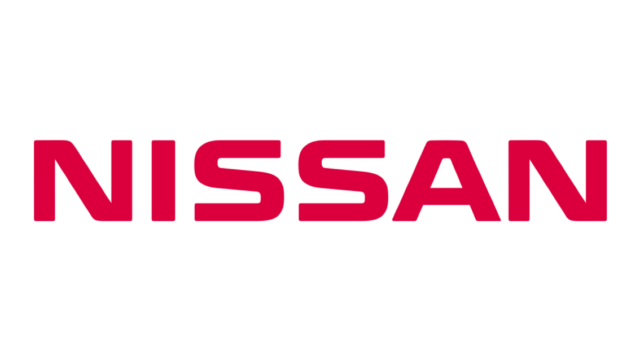





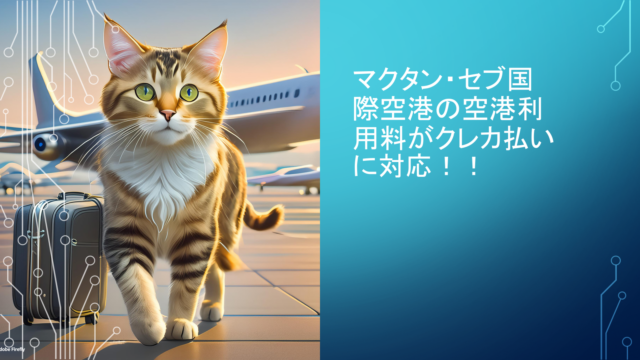









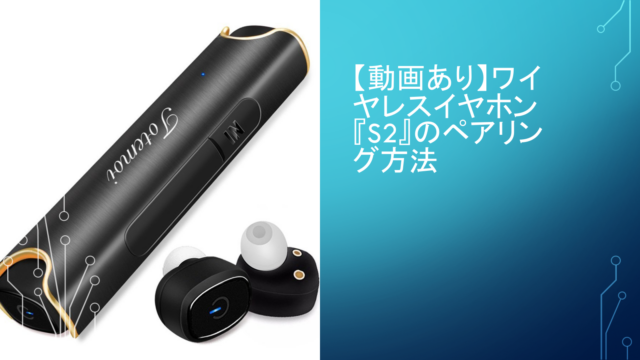

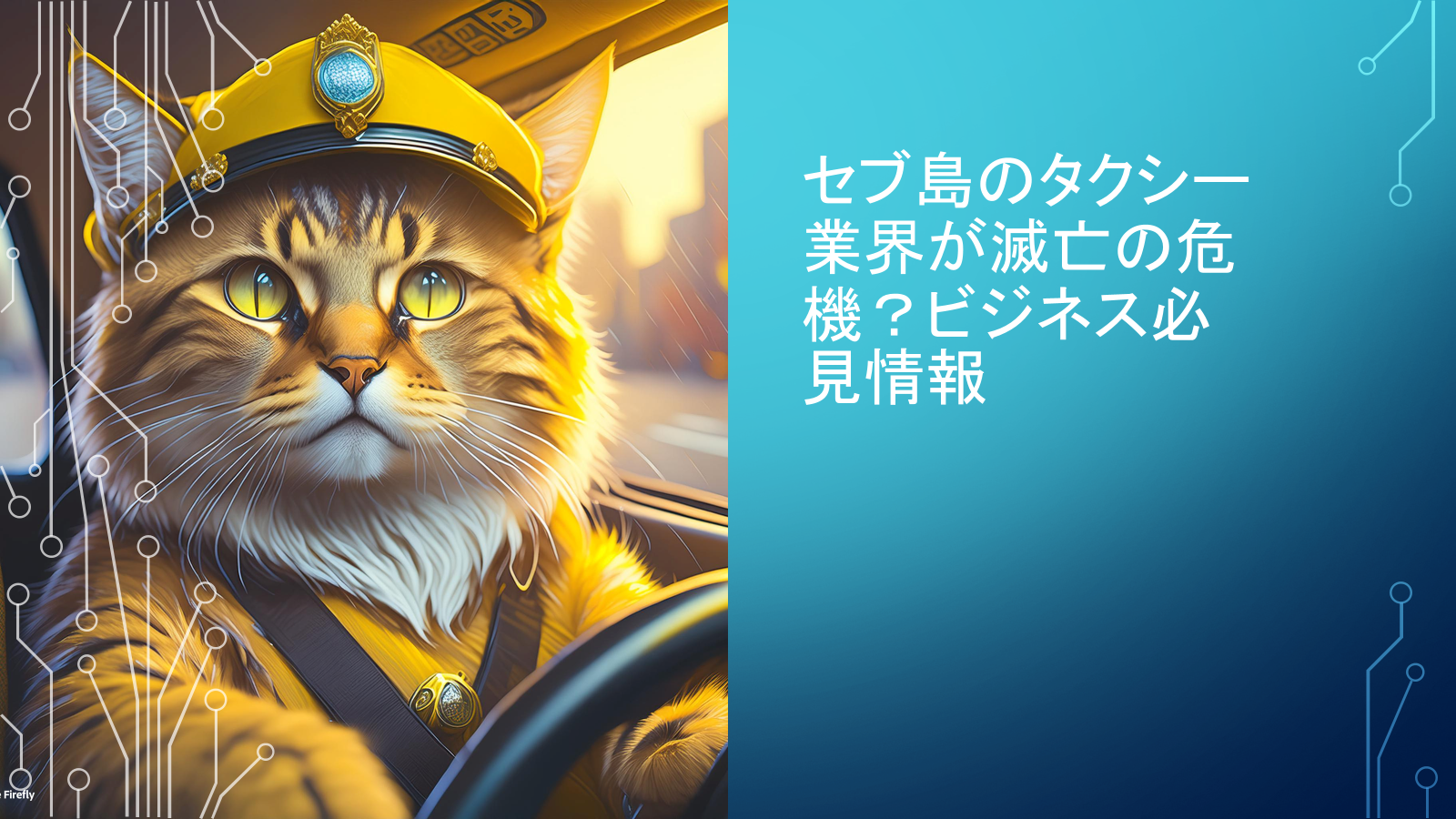







コメント